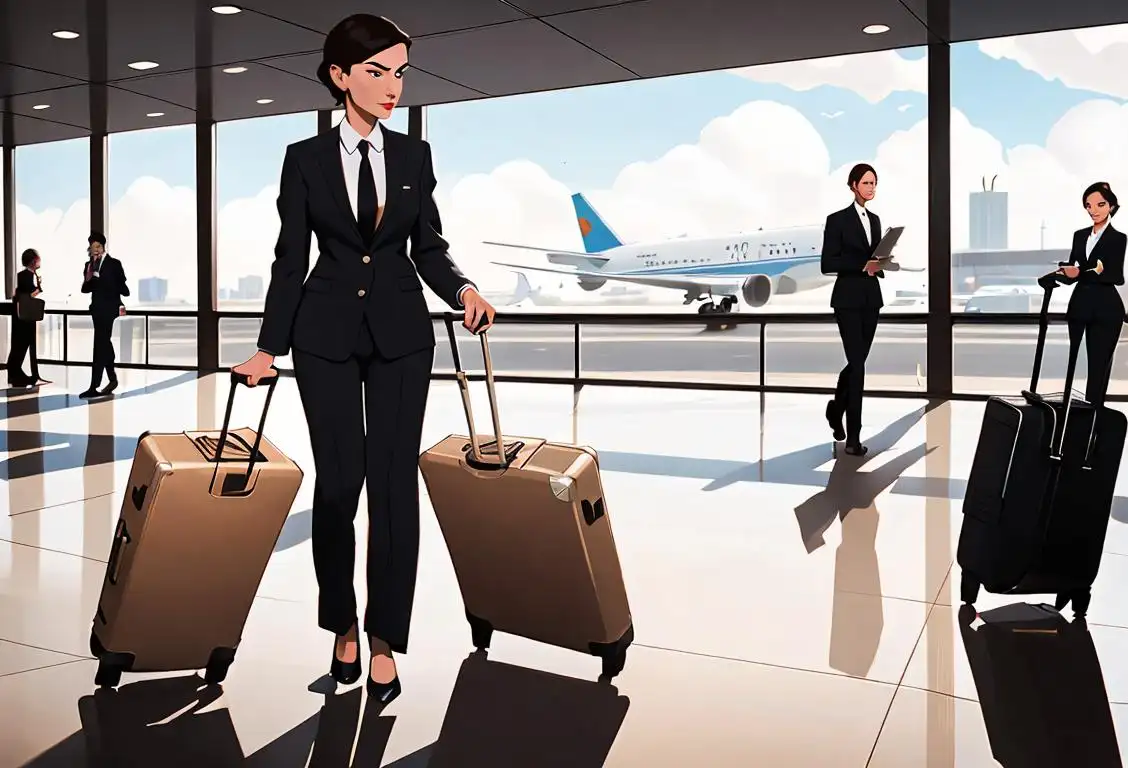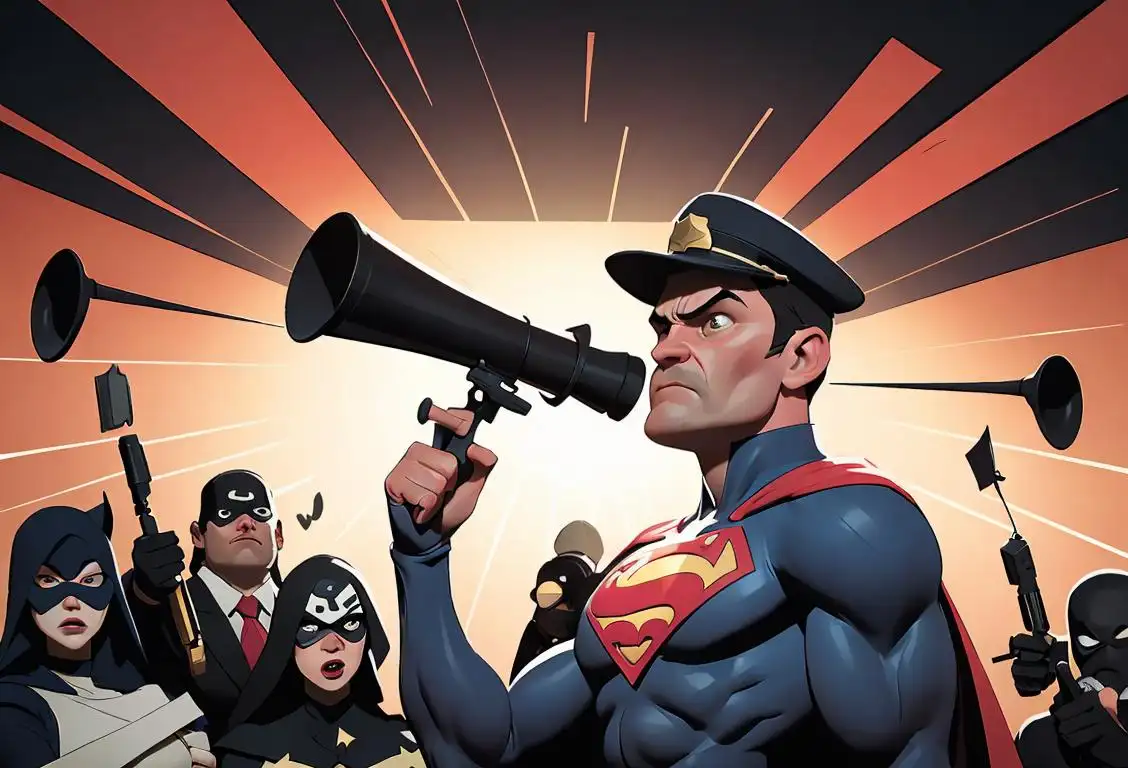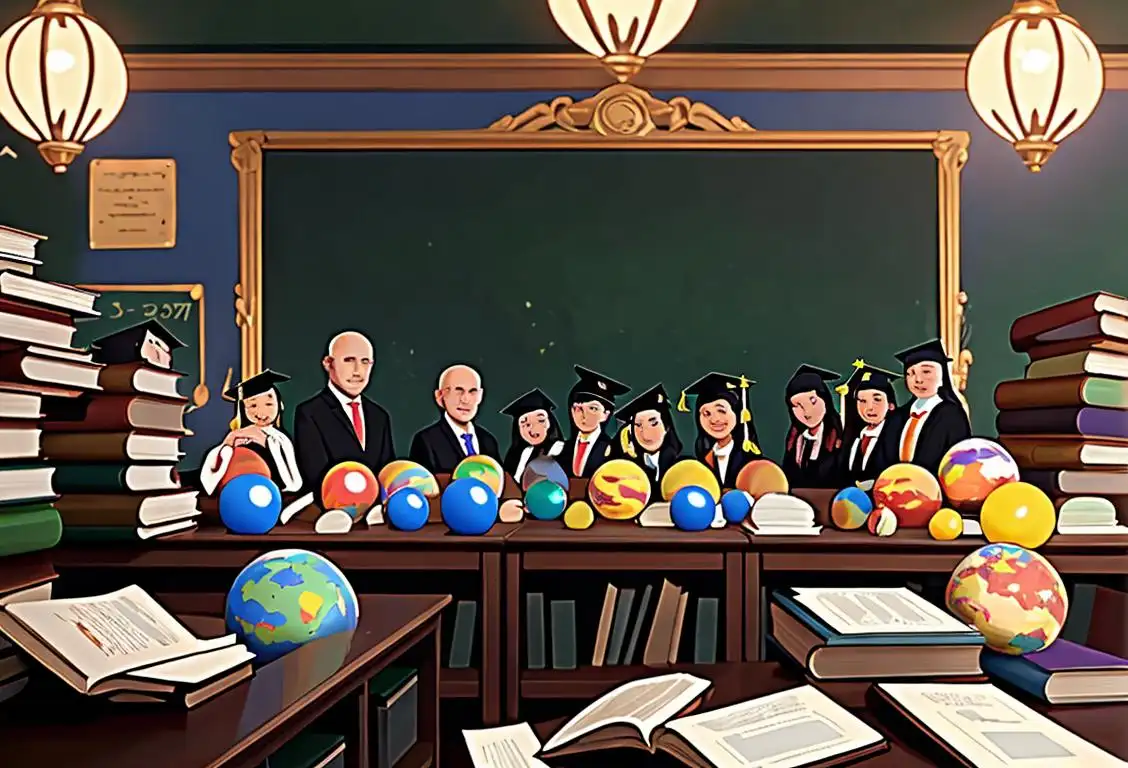National Flight Attendant Day

Ahoy there, fellow internet wanderer! Are you ready to learn about National Flight Attendant Day? Buckle up, because we're about to take off on a delightful journey through the history of this special day!
When is Flight Attendant Day?
It's national flight attendant day on the 31st May.
The Origins of National Flight Attendant Day
Picture this: It's a sunny day in 1930, and the skies are aflutter with the excitement of early aviation. It was during this golden age of air travel that flight attendants, known then as 'air hostesses,' first took to the skies. These pioneering individuals were responsible for ensuring the comfort and safety of passengers, all while looking effortlessly glamorous.
Fast forward to the modern era, and the role of flight attendants has evolved tremendously. They are quintessential multi-taskers, effortlessly juggling safety procedures, customer service, and providing a pleasant flying experience for all. Today, National Flight Attendant Day stands as a celebration of their hard work and dedication to making every flight a smooth and enjoyable one.
A Day to Appreciate the High Flyers
On National Flight Attendant Day, we pay tribute to the incredible men and women who make air travel a breeze. From ensuring the adjustable seatbelt is snugly fastened to serving up snacks and beverages with a smile, flight attendants are the unsung heroes of the aviation industry. They navigate turbulence with grace, extinguish any fiery in-flight situations, and help passengers feel at ease as they soar through the clouds.
So, how can you show your appreciation on this special day? Why not take a moment to thank the flight attendants on your next flight? A simple smile, a heartfelt 'thank you,' or even a small token of appreciation can go a long way in brightening their day. After all, they work tirelessly to ensure our journeys are safe, comfortable, and as pleasant as possible.
Did You Know?
Did you know that flight attendants go through rigorous training before they are ready to take to the skies? They learn how to handle emergency situations, perform CPR, and provide first aid. Hopefully, you'll never have to witness their super skills in action, but it sure is reassuring to know they're there!
History behind the term 'Flight Attendant'
1930
Introduction of stewardesses
In 1930, the first female flight attendants were introduced on United Airlines. They were called stewardesses and their primary role was to assist passengers during their journey. These pioneering women were required to be single, young, and attractive, setting the stage for the first generation of flight attendants.
1930
Introduction of the term 'stewardess'
In the early days of commercial aviation, the term 'stewardess' emerged to describe the primarily female cabin crew members who were responsible for serving and attending to passengers. The word 'stewardess' was derived from the word 'steward,' which traditionally referred to a male servant or attendant. It was chosen to denote the role of assisting and ensuring the comfort of passengers during flights.
1912
The Birth of Air Hostesses
In the year 1912, Heinrich Kubis, a German passenger on the LZ 10 Schwaben zeppelin, became the world's first flight attendant. However, the term 'flight attendant' had not come into existence at this time. Kubis was hired by the zeppelin company to ensure passenger comfort and safety during the flight. This marked the birth of the profession, although it would still take several years for the role to formalize and gain recognition.
1912
The Birth of the Stewardess
In 1912, the first flight attendant-like position was introduced by the German airline, Deutsche Luft Hansa. Referred to as 'air hostesses,' these pioneering women were selected based on their appearance, age, and single marital status. Their primary role was to care for passengers during flights by providing refreshments and assistance.
1912
First Air Service Stewardess
In 1912, the first official flight attendant, then known as an 'Air Service Stewardess', made her debut on a flight. These pioneering women were hired by airlines to provide in-flight services and primarily catered to the comfort and needs of passengers. The role of the Air Service Stewardess was to ensure passengers felt secure and enjoyed their flight experience.
1968
Gender-neutral term 'flight attendant' is introduced
As societal norms and expectations began to evolve in the late 1960s, the term 'flight attendant' was introduced to replace 'stewardess' in order to be more inclusive and to eliminate gender-specific language. This change recognized that individuals of any gender could fulfill the duties of a cabin crew member. It helped promote equality and diversity within the aviation industry, further aligning it with progressive social changes taking place during that era.
1930
The Transition to In-Flight Nurses
During the 1930s, airlines started hiring registered nurses to serve as inflight attendants. At the time, flying was still a relatively new and uncertain experience for many travelers. Having nurses onboard helped to alleviate passenger anxiety, as they provided medical assistance and first aid during flights.
1968
Gender-neutral term 'flight attendant' emerges
In 1968, as more airlines began hiring male cabin crew members, the term 'flight attendant' was first used. This marked a significant shift away from solely using the term 'stewardess' and recognized the contribution of male crew members. The new term emphasized gender neutrality and paved the way for more inclusivity within the profession.
1920
Nursing Background Requirement
By the 1920s, airlines began to require that flight attendants have a nursing background. This requirement was implemented to provide a higher level of care to passengers during flights. Air travel was still relatively new, and the presence of flight attendants who had nursing experience helped alleviate concerns about medical emergencies on board.
1930s
Nurse-in-the-Air
During the 1930s, airlines began to employ registered nurses on board their flights to provide medical assistance to passengers. These nurse-in-the-air positions were essentially the predecessors of modern flight attendants. However, their primary responsibility was to attend to medical emergencies rather than the overall comfort of the passengers. This role further laid the foundation for the evolving profession of flight attendants.
1944
The Term 'Stewardess' Takes Flight
In 1944, United Airlines became the first commercial airline to use the term 'stewardess' to refer to its female flight attendants. The term 'steward' was a gender-neutral term used for male cabin crew members at the time. United Airlines' decision sparked a trend, and other airlines adopted the term, which remained in use for several decades.
1945
The Rise of Stewardesses
In 1945, United Airlines hired the first female flight attendants, known as stewardesses. These young women were chosen for their attractive appearances and were primarily responsible for providing passengers with meals and drinks. This innovation was a marketing strategy to attract more passengers and set a new standard for the role of flight attendants. Stewardesses quickly became symbols of glamour and elegance in the aviation industry.
1980s
Widespread adoption of the term 'flight attendant'
By the 1980s, the term 'flight attendant' had become widely accepted and used throughout the airline industry. It had successfully replaced 'stewardess' as the standard and preferred way to refer to cabin crew members in order to acknowledge and respect the professionalism and qualifications required for the role. The adoption of this gender-neutral and inclusive term was an important step in recognizing the valuable contributions of all individuals working in the field of aviation.
1930
Transition to Female-only Profession
In the 1930s, airlines transitioned to hiring only female flight attendants. This decision was influenced by a belief that women were better suited for the role due to their nurturing and caring nature. Moreover, the airlines saw an opportunity to capitalize on the glamorous image of young, attractive, and well-groomed female flight attendants, which became a distinctive feature of the profession.
1970s
Emphasis on safety and training
During the 1970s, the role of flight attendants expanded beyond just customer service. With the increasing importance of safety regulations, airlines began focusing on rigorous training programs for their cabin crew members. Flight attendants became responsible for ensuring the safety and well-being of passengers, including handling emergencies and communicating safety protocols.
1980s
Equal Employment Opportunity Commission ruling
In 1981, the Equal Employment Opportunity Commission (EEOC) ruled that airlines could no longer enforce specific height and weight requirements for flight attendants. This decision aimed to combat discriminatory practices and open up opportunities for individuals of diverse body types. As a result, airlines began embracing a more inclusive approach to recruitment and hiring.
1968
Gender Equality: Flight Attendant
In 1968, an important shift occurred in the industry. The term 'flight attendant' was officially introduced by American Airlines, acknowledging the need for gender-neutral job titles. This change reflected the evolving approach towards gender equality and opened up opportunities for both men and women to pursue careers as inflight crew members.
1945
First Male Flight Attendant
The year 1945 marked a significant milestone with the hiring of the first male flight attendant. Prior to this, the occupation had been exclusively female. Although male flight attendants were still a rarity at the time, it marked the beginning of a slow but steady shift towards a more diverse workforce in the airline industry.
1960s
Transition to Flight Attendants
In the 1960s, the term 'flight attendant' emerged as a progressive terminology to replace 'stewardess,' which had gender-specific connotations. This shift recognized the gender diversity within the profession and acknowledged the inclusion of male flight attendants. The change reflected society's evolving understanding of gender roles and set the stage for a more inclusive and diverse workforce within the aviation industry.
Present
Evolution of the flight attendant role
Today, flight attendants play a crucial role in ensuring passenger comfort, safety, and well-being. They receive extensive training in areas such as first aid, emergency procedures, security protocols, and customer service. The occupation continues to evolve with advancements in technology and cultural shifts, but flight attendants remain an integral part of the aviation industry.
1968
Introduction of the Term 'Flight Attendant'
In 1968, the term 'flight attendant' was officially introduced by United Airlines, replacing the previously used title of 'stewardess'. The industry recognized the need for a gender-neutral term to reflect the evolving role and to be more inclusive of male flight attendants. 'Flight attendant' became the standard term used to describe both male and female professionals in the field.
1970s
Regulation and Professionalization
During the 1970s, the Equal Employment Opportunity Commission (EEOC) in the United States mandated that airlines could no longer discriminate based on gender in their hiring practices. This led to an increase in the number of male flight attendants and further propelled the professionalization of the industry. Flight attendants were required to undergo rigorous training programs and adhere to strict regulations to ensure passenger safety. The profession became more respected and recognized as an integral part of airline operations.
1989
Airplane Safety and Customer Service
With the increasing importance of safety and customer service in the aviation industry, flight attendants' roles expanded beyond providing refreshments. They became integral in ensuring passenger safety during emergencies, conducting safety demonstrations, and offering impeccable customer service throughout the flight.
Present
Flight Attendants Today
In the present day, flight attendants play a vital role in ensuring a smooth and enjoyable flying experience for passengers. They receive extensive training in areas like emergency procedures, first aid, and customer service. Flight attendants are essential in maintaining passenger comfort, safety, and well-being throughout their journey.
1970s
Equal Employment Opportunity Laws Impact
During the 1970s, equal employment opportunity laws had a significant impact on the flight attendant profession. These laws prohibited discrimination based on gender and opened up opportunities for men to pursue careers as flight attendants more freely. As a result, the industry experienced growing diversity and a shift away from gender-specific hiring practices.
Present
Flight Attendants as Safety Experts
In the present day, flight attendants are highly trained professionals and play a crucial role not only in providing excellent customer service but also in ensuring the safety and security of passengers. They undergo rigorous training programs that include emergency procedures, first aid, and self-defense. Flight attendants are knowledgeable about aircraft operations and are well-prepared to handle various in-flight situations.
Did you know?
Did you know that flight attendants go through rigorous training before they are ready to take to the skies? They learn how to handle emergency situations, perform CPR, and provide first aid. Hopefully, you'll never have to witness their super skills in action, but it sure is reassuring to know they're there!Tagged
fun appreciation travelFirst identified
31st May 2015Most mentioned on
31st May 2019Total mentions
143Other days
Business Traveler Day
Flight Attendant Day
Hug A Newsperson Day
Spouse Day
Hug A Drummer Day
Whistleblower Appreciation Day
Teacher Appreciation Day
School Librarian Day
Teacher Day
Parents Day








